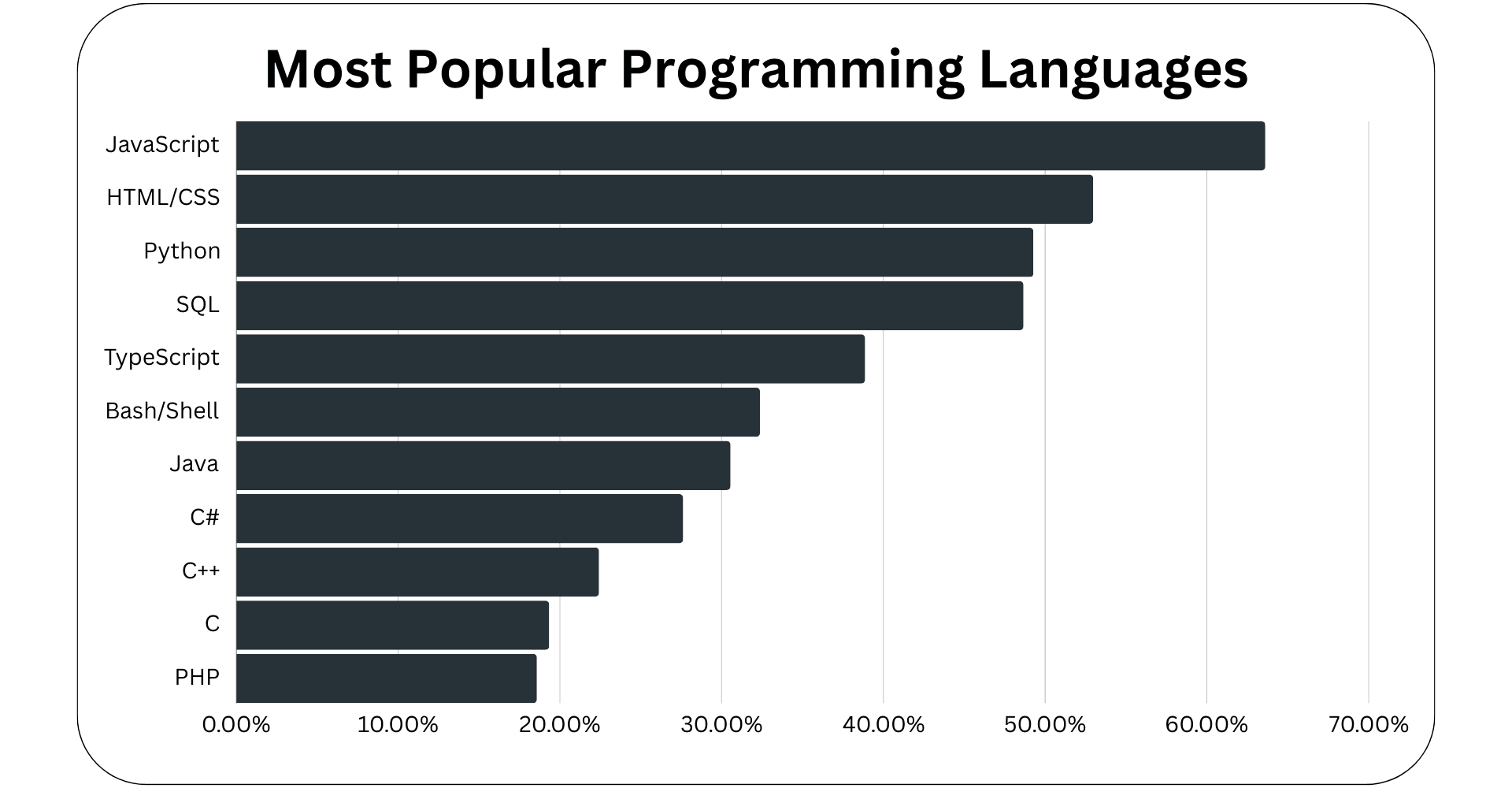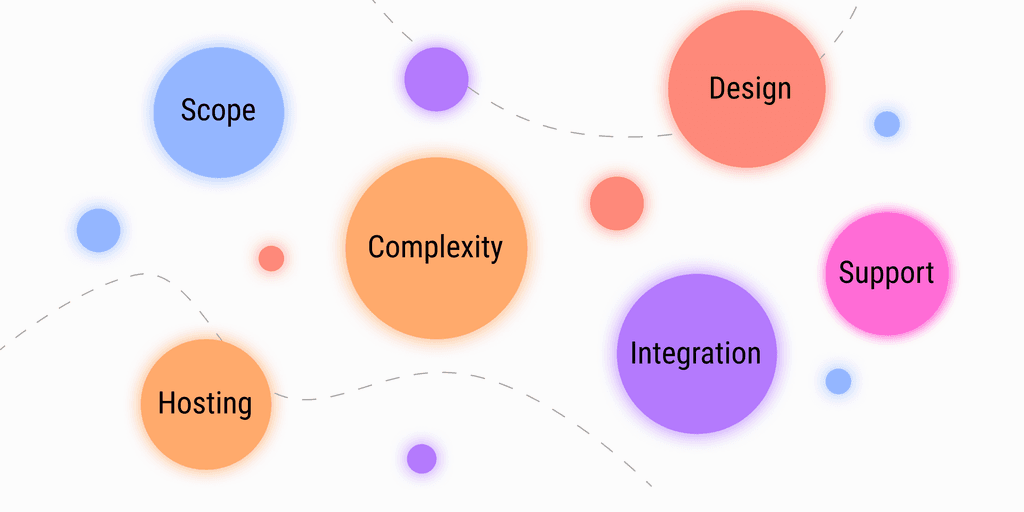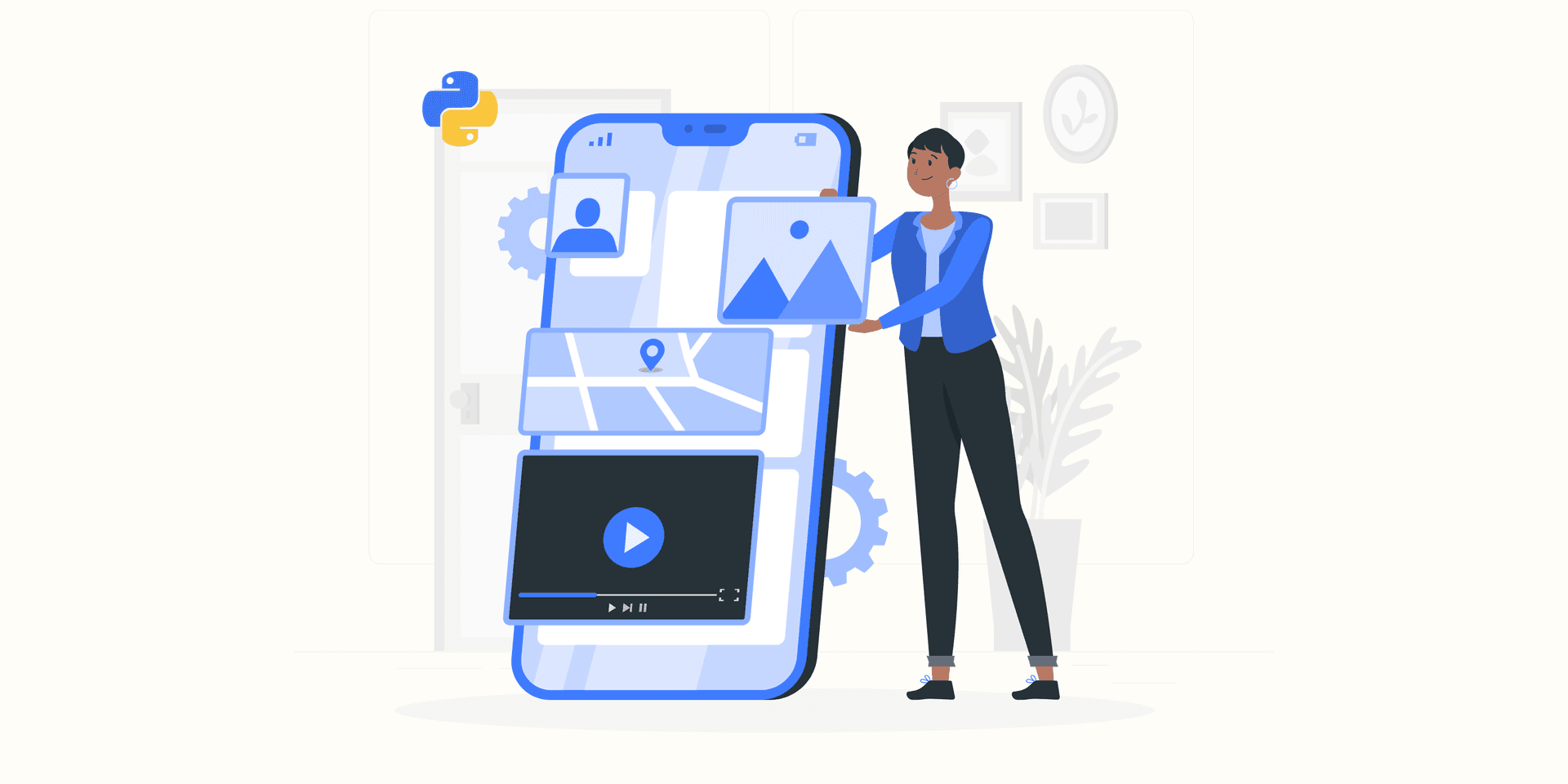How Much Does It Cost to Build a Python Application?
Developing an application in a language so versatile as Python can serve any purpose required may it be web development, data analytics, artificial intelligence, or even a video game.
To successfully develop a Python application, understanding how much it costs and why it costs that way is important to make the best out of your budget and maximize the quality and complexity of the app you build.
In this article, we will delve into the factors influencing the cost of building a Python application, provide cost estimates, explore ways to develop cost-effectively, and discuss alternatives to Python.

Why Python for App Development
Python is ideal for a plethora of reasons that make it one of the primary languages to develop sophisticated applications with different and innovative functionality, it is the third most popular programming language in the world (according to the 2023 Stack Overflow survey) and a reliable option for developing intuitive software.

Some of the reasons developers tend to use Python for the applications or at least use it for the backed development are:
Versatility: Python is a versatile language, making it suitable for applications ranging from web development to AI, backed by its AI-focused libraries.
Ease of Learning and Use: Python's simple and readable syntax makes it easy for developers to learn and write code efficiently, reducing development time and costs.
Rich Ecosystem: Python boasts a rich ecosystem of libraries and frameworks, such as Django, Flask, TensorFlow, and other tools frequently highlighted in most used Python frameworks.
Community Support: Python has a large and active community of developers who contribute to its growth by creating libraries, providing support, and sharing knowledge, which can be invaluable during the development process.
Cross-Platform Compatibility: Python is a cross-platform language and can work on any platform seamlessly whether it's Windows, macOS, or Android and iOS.
Factors that affect the cost

1. Scope and Complexity
- The development cost of your Python application is closely related to the scope and complexity of the said application.
- Compared to a sophisticated enterprise-level solution with extensive functions, a basic web application with fewer features will be less expensive.
- The scope and complexity of the application significantly impact the development cost.
- The number of features, user roles, integration needs, and scalability issues are some of the variables that add to the project's total complexity.
2. Design and User Experience
- Investing in high-quality design and user experience can enhance the appeal and usability of the application but may incur additional costs.
- Custom UI/UX design services, wireframing, prototyping, and user testing contribute to the overall design cost.
- Balancing aesthetic appeal with functional usability is crucial for delivering a compelling user experience without overspending on unnecessary design elements.
3. Development Time and Resources
- Since development efforts typically get paid on an hourly basis, the cost is directly impacted by the amount of time required for building the application.
- Development time and cost are influenced by several factors, including the availability of skilled programmers, the efficacy of project management, and development approaches (e.g., Agile, Waterfall).
4. Integration and Third-Party Services
- The cost of the application may go up if third-party services like analytics platforms, cloud storage & computing, integrating payment gateway APIs, or social network APIs are used in the app.
- The project budget should account for expenses related to licensing fees, API usage, and development work needed for integration.
5. Infrastructure and Hosting
- Infrastructure costs, including server hosting, database management, and cloud services, are crucial decisions for web-based applications.
- Infrastructure expenses are influenced by the scalability needs, server setup, and hosting provider choice.
- Although they provide scalability and flexibility, cloud development services that integrate the Google Cloud Platform, Microsoft Azure, and Amazon Web Services (AWS) may have recurring operational costs depending on their use.
6. Maintenance and Support
- To guarantee the application's long-term sustainability and performance, ongoing maintenance and support are essential.
- It is imperative to provide funds for post-launch maintenance, security upgrades, bug fixes, and feature additions to maintain the application's value proposition and appease users.
- Initiating a maintenance agreement or dedicating resources for continuous assistance serves to reduce risks and guarantee prompt issue resolution.
7. Geographic Location and Developer Rates
- Developer rates vary based on the geographic location, with rates typically higher in the West where the cost of living is high.
- Offshore development centers offer lower hourly rates and project fees by capitalizing on lower salary rates in their region.
- However, ODCs require effective communication and collaboration for efficient project management.
Cost Estimates
Considering the factors mentioned above and using various data sources, we have calculated estimates of how much it could cost you to develop a Python application based on the approach you choose and the type of Python app you build.
Developer Salaries
If you or your firm decides to directly hire Python developers to build your app, you may want to consider several factors as to whether you are hiring full-time or freelance, labor laws in your region of employment, and the work benefits you plan or may have to provide.
These factors differ significantly from region to region as the laws, norms, and culture vary greatly.
In this chart on the base pay of a Python developer globally, you will find a great variation as to how India is incredibly cheap for hiring compared to its counterparts with an average salary of $12,000 per annum meanwhile in the United States you would have to pay $100,000 a year.

Salary data sourced from Glassdoor
Company Rates
If hiring employees to build your Python app is not feasible, you can contract a third-party firm to outsource the development of your Python application.
They tend to have a specialty in developing applications for their clients and depending on their type they can offer you business great value proposition.
Costs of Building the Python Applications
Our cost estimates for developing Python apps vary widely depending on the type of application being developed, the features and functionality, complexity and integrations, and specific requirements one could have.

Web Development
Simple Website- $1,000 to $5,000
Building a basic website using Python and a lightweight framework like Flask or Django with features such as static pages, and contact forms can cost anywhere from $1,000 to $5,000.
Dynamic Web Application- $5,000 to $20,000
Developing a dynamic web application with user authentication, database integration, and CRUD functionality could range from $5,000 to $20,000 or more, although tailored to the complexity and design.
E-commerce Platform- $10,000 to $50,000
Creating an e-commerce platform with features like product listings, shopping cart functionality, payment gateways, and order management may cost between $10,000 to $50,000, according to the scale and customizations required.
Mobile App Development:
Simple Mobile App- $5,000 to $20,000
Building a simple mobile app for iOS or Android using Python frameworks like Kivy or BeeWare might cost between $5,000 to $20,000.
This would include basic features and functionalities without complex backend integrations.
Cross-platform App- $20,000 to $100,000
Developing a cross-platform mobile app using frameworks like React Native or Flutter with Python backend services could range from $20,000 to $100,000, tailored to the app's complexity and features.
Data Analysis and Visualization
Data Analysis Tool- $5,000 to $30,000
Creating a data analysis tool using Python libraries like pandas, NumPy, and Matplotlib may cost between $5,000 to $30,000, depending on the complexity of data processing, visualization requirements, and user interface design.
Business Intelligence Dashboard- $20,000 to $100,000
Developing a business intelligence dashboard with interactive visualizations, data querying capabilities, and user authentication could range from $20,000 to $100,000, depending on the depth of analysis and integration with data sources.
Machine Learning and AI
Machine Learning Model- $10,000 to $50,000
Building a machine learning model for tasks like image classification, sentiment analysis, or recommendation systems might cost between $10,000 to $50,000, according to the complexity of the model, data preprocessing, and training requirements.
AI-powered Application- $50,000 to $200,000
Developing an AI-powered application with features like natural language processing (NLP), computer vision, or predictive analytics could range from $50,000 to $200,000 or more, depending on the sophistication of AI algorithms and integration with existing systems.
Desktop Application
Desktop GUI Application- $5,000 to $30,000
Building a desktop GUI application using Python libraries like Tkinter or PyQt may cost between $5,000 to $30,000, based on the complexity of the user interface, features, and platform compatibility requirements.
Data Management Tool- $10,000 to $50,000
Developing a data management tool with features like data import/export, database integration, and visualization capabilities could range from $10,000 to $50,000, tailored to the scale of the application and customizations needed.
IoT Application
IoT Device Management System- $20,000 to $100,000
Creating an IoT device management system with features like device provisioning, data collection, and real-time monitoring might cost between $20,000 to $100,000, based on the complexity of IoT protocols, security requirements, and the scalability required.
How to Develop a Python App Cost-Effectively
Developing In-House
- One option is to leverage the organization's current skills and resources or hire and acquire them to create the application internally.
- Businesses can minimize external expenditures and maintain control over the development process by using in-house developers.
- Adopting agile development approaches, like Scrum or Kanban, also encourages cooperation, openness, and flexibility, enabling teams to adjust to changing needs and provide value gradually.
- Development efforts are directed toward providing the greatest value within the allocated budget when features are prioritized based on user feedback and business goals.
Building it With Freelancers
- Using independent contractors to construct the application is another efficient strategy that makes use of a worldwide talent pool of knowledgeable developers with specialized skills.
- Because freelancers provide resource allocation flexibility, organizations may scale up or down in response to project demands without incurring the costs associated with recruiting full-time staff.
- Working with freelancers requires clear communication, and well-defined project objectives and deliverables to guarantee alignment with project goals and expectations.
- Assessing independent contractors according to their standing, background, and performance history reduces risks and guarantees timely, high-quality work completed within allocated funds.
Outsourcing it to an Offshore Development Center
- Another practical choice for developing Python applications at an effective price is to outsource the work to an offshore development center.
- Lower labor costs enable offshore development centers to maintain quality standards and expertise at competitive pricing.
- If outsourced to the best country, your development partner may boast increased development efficiency and provide high-quality solutions that are suited to project objectives by utilizing the specialized talents and expertise of offshore teams.
- When working with offshore teams, efficient communication, and teamwork are essential to ensuring smooth engagement, quickly addressing issues, and maintaining project alignment across time zones.
Conclusion
- Developing a Python application contains several elements that affect the final cost: scope, complexity, design, time required for development, integration, and continuing maintenance.
- Through comprehension of these elements and implementation of economical development tactics, enterprises may effectively utilize Python to create applications while maximizing expenses.
- Furthermore, considering alternative technologies by project specifications might offer insightful choices and solutions for reaching desired results within financial limits.
- Ultimately, producing a Python application that satisfies user demands and corporate objectives requires investing in the appropriate technology and development methodology.
